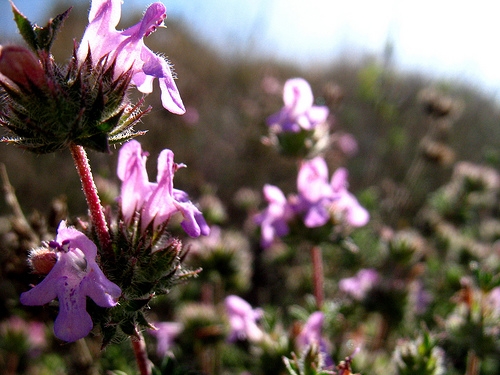- Author: Georgia Luiz
Ever since I moved to California, I've been privy to a late winter treat that I've never had before. Amidst the cast away debris of winter, some plants perform so beautifully, that they are sorely missed later on even when everything else is in full bloom.
In my garden, the green lush fragrant rosemary (Rosmarinus officinalis) explodes in periwinkle flowers. The happy wanderer (Hardenbergia violacea) vine blooms profusely with tiny sweet pea shaped lavender flowers. Even the lilac bushes put on a show stopping magenta array to sniff at. There's shy little piles of violets and primroses, cyclamen, and some budding roses, who are probably just confused.
They're just what I need to get motivated after hibernation.
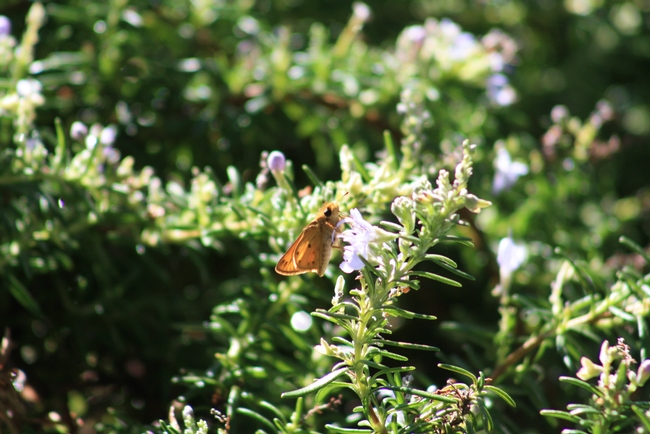
- Author: Mary B. Gabbard
Today’s my day to blog, and I’m at a bit of a loss. My son’s 19th birthday is today, and he’s away at school in New York. This is a first for our family-celebrating a birthday without the guest of honor! So how does this relate to a gardening blog? Well, when I think about planting, I typically think about planting for the season. Today, however, my thoughts are turned toward planting to remind us about special events in our lives. For instance, every fall, I look out my kitchen window and see a beautifully blooming Lagerstroemia indica (Crape Myrtle). This tree was a gift given to my husband in memory of his mom. I look forward to those purple blooms, but more importantly, as I look at that tree throughout the year, my mind is filled with fond memories of my mother-in-law and the times we spent together. Underneath my living room window, I am eagerly awaiting the beautiful blooms from my Camellia japonica, a gift given to me from my sister in memory of my father-in-law. So today, as my family celebrates Ben’s birthday, I will be deciding what to plant to remind me of my son and the change this signifies in our family. I’m thinking of something with strong beginnings in its framework with lots of potential for growth over the years. I already have the spot picked out in my yard; it too can be viewed every time I’m washing dishes and will put a smile on my face as I think about my son and what he might be doing at that moment. No time to mope, it’s time to plant!
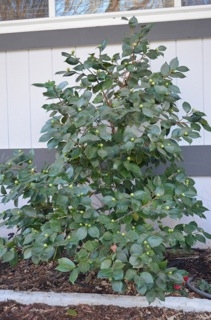
- Author: Sharon L. Rico
Terrariums have always fascinated me, especially when they contain tiny buildings, oriental bridges, driftwood, unusual rocks AND plants. I also have a fondness for Wardian cases, that were popular during Victorian days, displaying unusual plants, moss, and often small reptiles. They originally were built to transport plant specimens from Europe and Asia to the U.S., or other locations. The moist enclosed containers would maintain the plants for some time, until they reached their destination.
Part of the fun is the hunt for tiny, small plants that will fit your glass container and any tiny decorative accessory to add to the plants. Ferns, succulents, violets, orchids and air plants work well as the living part of your miniature “home”, and small pieces of bark, rocks or a bird nest, along with tiny ceramic insects, reptiles or figurines will complete your miniature world.
During the holidays I purchased some large plastic, clear ornaments (4x4x1), at a craft store. What fun it was to plant them with moss, succulents, air plants and carefully embellish them with driftwood and rocks. These miniature growing globes were fun to create and give as gifts. They will last for years with only minimum attention and an occasional sprinkling of water.
We all desire to connect with nature and to nurture living things, especially during winter months when it’s difficult to be out in the garden. Consider creating your own terrarium or miniature garden. You will find great resource books in our local libraries.
- Author: Jennifer Baumbach
Well, on December 3, the Master Gardeners celebrated their 21st Wreath Workshop. There were 40 wreath makers in attendance and they created some of the most fabulous wreaths! Each were given a box of redwood, a wire wreath frame and paddle wire. They could also choose from 'extra' greens, which were: heavenly bamboo (Nandina domestica), Breath of Heaven (Coleonema spp.), Sweet bay (Laurus nobilis), Eucalyptus, Rosemary (Rosmarinus officinalis), Lavender (Lavandula spp.), and Yew (Podocarpus gracilior)-to name a few. Each person had access to the same materials, along with natural decorations, but each wreath came out very unique-especially to that persons' creativity. Below is a sampling of the wreaths made at the event this year.
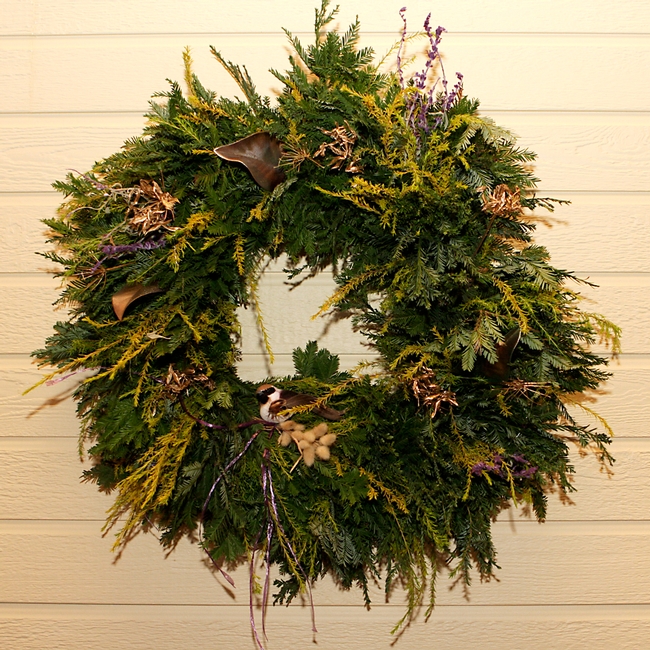
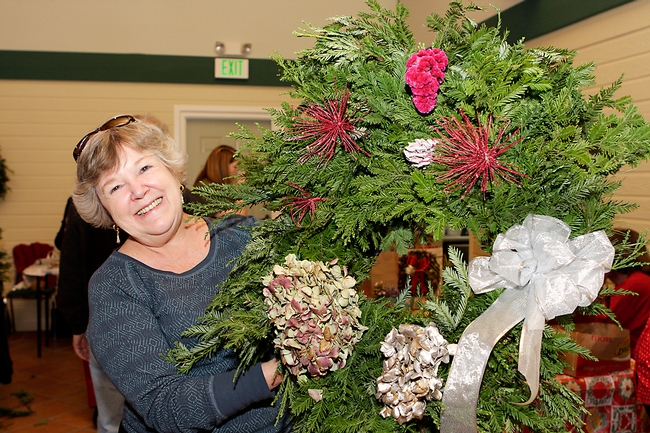
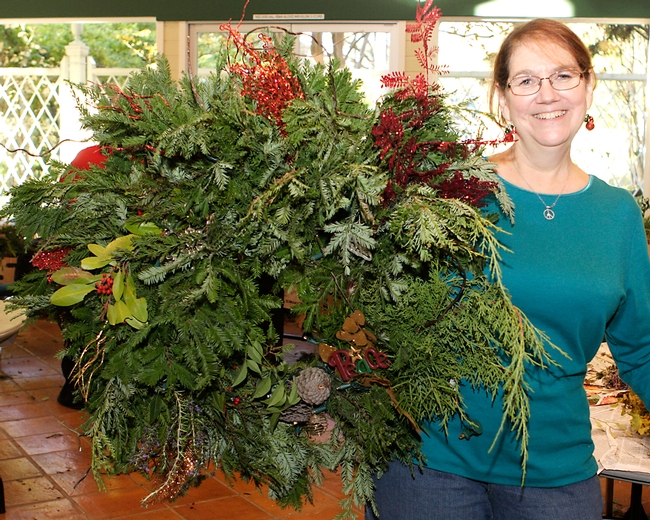
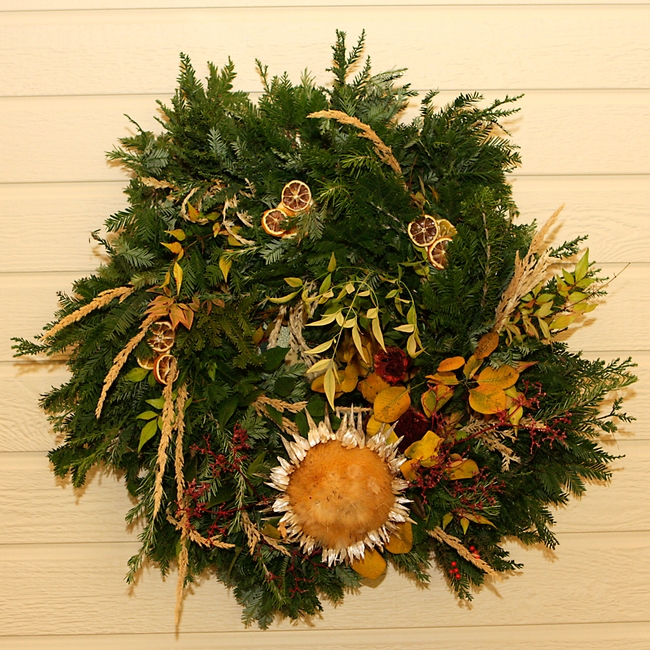
- Author: Trisha Rose
What is this mysterious ingredient that Michael Symon and other Iron Chefs are talking about when they refer to Za'atar. I am usually watching the foodie shows in the evening and the question soon fades away only to resurface another evening when a Mediterranean dish is being prepared. By happenstance I recently attended a plant sale and spied an herb marked "Za'atar". Ok, finally I am to find out what the fuss is about with this herb. The plant is labelled Satureja thymbra aka 'Pink Savory Za'atar' of the Laminaceae (mint family) a perennial that grows to 12 " likes sun, is a mid-Eastern spice with the delicious flavor of oregano, thyme and mint and the plant prefers hot dry areas. Great, I have just the garden space in my new perennial garden. Almost alright, I next go to Google to corroborate this new information. I find confusion with my results, is Za'atar an herb as mine was labelled, or is it a spice mixture similar to a curry mixture?
I find that Za'atar has references both as a spice mixture and an herb. The herb Origanium syriacum appears to be the true za'atar with hyssop, Satureja thymbra, the genus of tender, thyme-like plants (Thymbra spicata, t. capitatus) also referred to as Za'atar. The common denominator with these plants is the aroma of oregano from the chemical carvacrol.. The Za'atar spice blends include oregano or thyme or both. So, as is frequently the case, with too much information I have to make a choice. I am going to stay with my local source and I will grown the herb, Satureja thymbra in my garden and call it Za'atar. This evergreen perennial is native to the Mediterranean and is a dominant plant on the island of Crete. It flowers in the spring with large pink flowers and the bush is highly aromatic and imparts a spicy flavor. Here in zone 9b we are very lucky to share the Mediterranean climate that allows many plants to thrive as perennials with the lovely benefit of year round herb gardens. Maybe, I'll send off a question to Alton Brown on this subject and let him tackle this subject and see how he does.
